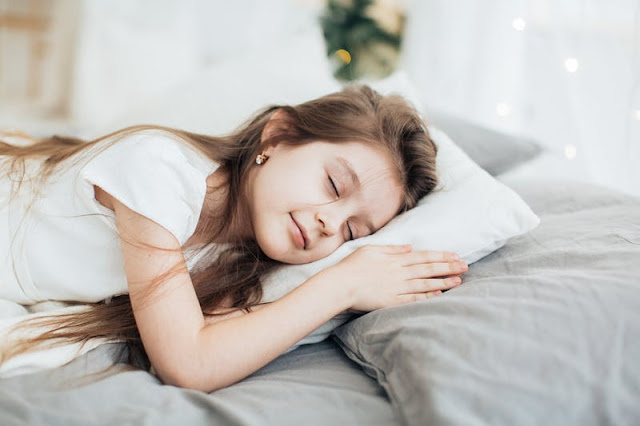The Scandinavian Sleep Method: What Is It and Does It Work?
The Scandinavian Sleep Method: What Is It and Does It Work?
Although sharing a bed with your partner can increase your sense of safety and intimacy, sharing a bed does not guarantee better sleep for all couples. An otherwise restful night's sleep can be ruined by a cover hog or a nightly kickboxer, which has an impact on general health.
The Scandinavian sleep technique, in which a couple shares a bed but each person sleeps beneath a separate blanket, is one tactic partners can explore before deciding on a "sleep divorce."
But are there any advantages to the Scandinavian sleep technique? What do we know about the scientific basis for couples sharing a bed?
The Scandinavian approach to sleep
According to Wendy Troxel, Ph.D., behavioral scientist at the RAND Corporation and author of "Sharing the Covers: Every Couple's Guide to Better Sleep," the Scandinavian sleep method is popular throughout Scandinavia (which includes Denmark, Norway, and Sweden). While utilizing separate covers, it entails sharing a bed with a spouse.
How to do it: To make the bed, start with a fitted sheet and omit the top sheet (or use two twin top sheets). Then, place two twin duvets on top and as many pillows as you like.
According to Troxel, this approach has a number of advantages because it caters to more distinct sleep needs.
No more scraps over blankets. The main benefit is that it stops couples from playing tug of war at night, which can result in a lot of activity. Without leaving your companion in the cold, you can pull back the blankets or wrap yourself in a duvet burrito.
Temperature. According to Troxel, this technique works well for partners who enjoy different temperatures. Each spouse can select the weight or material of their duvet, saving them from having to compromise and feeling too warm or cold with one piece of bedding.
For couples who want to share a bed but don't want to practically sleep on top of one another, this technique works nicely.
It might fulfill the desire for intimacy as well as the need for private time to sleep.area for the night's actual sleeping period.
Continuing the story
Of course, it isn't a panacea. The Scandinavian method won't help much if your companion is snoring loudly, according to Troxel. Likewise, if a sleep issue is present and needs to be treated, it generally won't help. According to Troxel, "the nature of the problem will really determine the answer.
The study of shared versus separate sleeping
According to Troxel, researchers frequently monitor individuals sleeping alone in a controlled environment in a lab. This is obviously not how sleep functions in reality, especially when there is a second person involved (read: bed). About two-thirds of adults, she continued, "sleep with a partner.
This wasn't always the case, though. In addition, there are many myths regarding couples sleeping separately that are harmful to relationships. According to Troxel, the majority of assumptions about how couples should sleep are "totally socially-prescribed" and have evolved through time in Western culture.
Couples used to sleep apart less than 200 years ago, according to Troxel. Separate bedrooms or beds were considered healthier and a sign of affluence or status. "Those who could afford it in the Victorian era would sleep apart, but in earlier times, sleep was more of a communal practice... for entire families," says the author. Bed-sharing is a highly cultural behavior.
Then, according to Troxel, "we witness this actual shift, the post-1960s sexual revolution (in the U.S.)," where people start to mistakenly associate the literal sense of "sleeping together" with sex. Couples who slept apart, particularly married couples, were ostracized since it was thought to indicate a lack of intimacy or sexual activity. This just isn't the case, she declared.
What does research have to say about the advantages and drawbacks of couples sharing a bed, then? It varies. Research generally demonstrates that when people share a bed, they sleep slightly worse, according to Troxel. Surprisingly, subjective accounts frequently present a different picture. The majority of participants in those studies will respond that they prefer to sleep with their partner.They both sleep better together, she remarked.
According to Troxel, this is the case since sharing a bed with a mate gives us a feeling of security and comfort. The love hormone, oxytocin, which encourages happy emotions and a sense of relaxation and is helpful for falling asleep, can be released when two people cuddle.
A shared bed presents additional difficulties. Both the quantity and quality of one partner's sleep can be disturbed by their tossing and turning, snoring, or sleep talking. "I think it can be very beneficial for couples to choose to sleep apart," Troxel said. "That's when I think the objective costs of sharing a bed override those psychological benefits." But if you're not ready for a "sleep divorce," it might be worthwhile to attempt the Scandinavian sleep technique.
When to consider having separate beds
According to Troxel, it could be time to look into alternate beds or bedrooms if neither couple is sleeping well or if the other routinely disturbs the other's sleep.
According to Troxel, getting enough sleep is not only important for our personal health but also for the wellbeing of our relationships. We have strong scientific proof that sleep deprivation impairs communication and increases the risk of mental health problems, both of which can damage a relationship.
Troxel advises couples to try to ignore what people's opinions of couples sleeping apart are. Regardless of outward looks, couples must decide what will work best for them, according to Troxel. There are many methods to communicate before bedtime, even if you opt to sleep in separate beds or bedrooms.
She continued, "Getting excellent sleep does matter for the health of your relationship, whatever you do it.



Comments
Post a Comment